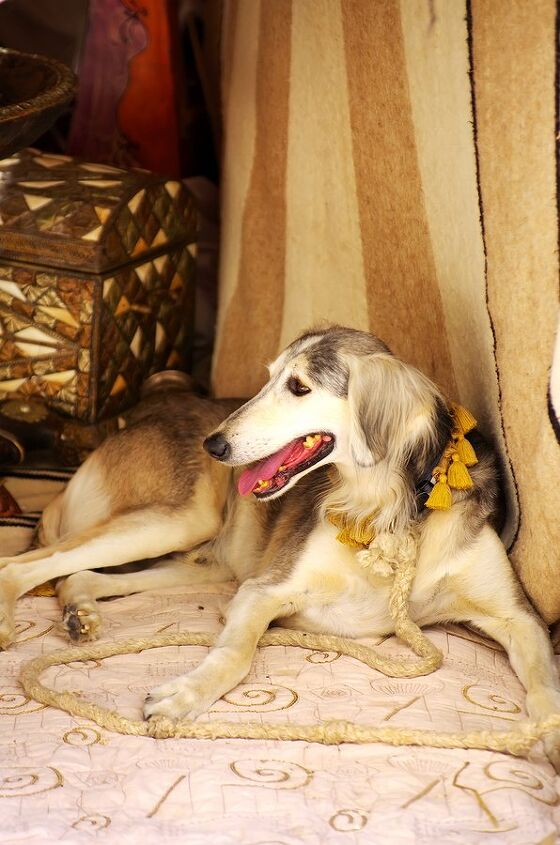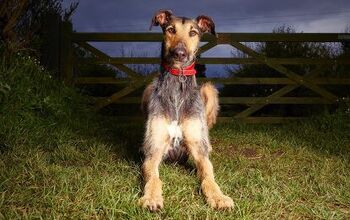Longdog


About Longdog
The Longdog’s sweet, laid-back demeanor makes him a rather poor watchdog, but this also means he’s a great family pet who loves going outside and giving chase to practically anything whether it be a thrown ball or a squirrel. While the Longdog only needs one or two walks per day to keep them content, they will happily go on more should their owner wish to go the extra mile on those gorgeous summer days.
A Longdog is a hybrid mixed breed – a mix of Greyhound with any other sighthound. This can include a Whippet, Scottish Deerhound and Saluki.
Depending on what kind of Greyhound is in the mixture, the Longdog’s coat can have a variety of different coat textures and colors.
Longdogs were generally bred for some of the same purposes as the Lurcher, but can offer more speed, while the Lurcher offers greater endurance and trainability. These faster dogs were used for coursing, or running down hares, and breeders used various types to create a dog with the preferred style of coursing.
The Longdog is s cross between a Greyhound, plus any other sightseeing hound such as a Whippet, Scottish Deerhound and Saluki.
Because the Longdog is such a tall animal, feeding bowls need be elevated so they don’t have to reach too far down to eat their food. Longdogs should be given high-quality kibble 2-3 times per day with the amount being relative to how much they weigh.
The Longdog is s cross between a Greyhound, plus another sightseeing hound such as a Whippet, Scottish Deerhound and Saluki.
Training should be introduced as soon as possible with the Longdog because they are naturally timid dogs. Training should begin as puppies, as they are more capable of soaking up information while they are younger. Because they are so shy, socialization is key to make them more comfortable around humans of varying ages as well as other animals such as cats or dogs. Training should always be performed with an even tone of voice, given plenty of time and be rewarded for good behavior.
Due to their tall frame, a Longdog can weigh anywhere from 35-100 lbs.
Longdogs are affectionate, but do enjoy their independence. Longdogs enjoy companionship but will not constantly annoy you for your attention. They are perfectly happy laying down and lazying it out on their bed (preferably your bed) while you attend to matters around the house.
While they may be a bit timid at first to anyone (newcomers especially), they will eventually warm up and become affectionate. Longdogs are naturally quiet, independent dogs and usually do well with families in a home who have a fenced backyard or can them for their 1-2 daily walks around the block. They are tolerable of children and even other animals such as cats or other dogs, so long as they are socialized when they are young. They enjoy giving chase to things or animals that are smaller than them, so be wary of that when going outside for their walks or allowing them to play in your fenced yard.
Depending on the Longdog’s lineage, he may be prone to some health problems, but they are relatively healthy overall. Due to their deep chests, Longdogs may be prone to gastric torsion, and sighthound breeds are more prone to osteosarcoma than other breeds. Other possible health issues include cardiomyopathy, autoimmune thyroiditis, torn toenails, heatstroke, heat exhaustion and foot/muscle injuries.
Longdogs usually live between 10-13 years.
Longdogs do not require much exercise to keep them in shape. One to two walks per day should be sufficient to keep them in shape. They may suddenly give chase to small critters outside. If you have a backyard, it is recommended to have a fence set high, as the Longdog is tall and can certainly jump over short fences. Walks should always be with a leash because of their love of chasing after small animals (can include rodents and/or other dogs).
Due to the Longdog’s height, we recommend their bowl be elevated so they don’t have to reach too far down to eat their food.
This breed is not recognized by any club, as their lineage can be Greyhound and any other sighthound breed.
Depending on the type of Greyhound used in the hybrid, the Longdog’s coat can have a variety of different coat textures and colors. It can be long, short, rough or smooth but in most cases, weekly brushings will be sufficient to keep it tangle-free and rid their coat of any loose hair.
Longdogs need to be trained and socialized at a young age so they can grow up to be well-rounded dogs who are friendly to other animals and humans.
Photo credit: Chris Parfitt/Flickr; inaquim/Bigstock

More by Diana Faria
























